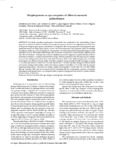Por favor, use este identificador para citar o enlazar este ítem:
http://www.alice.cnptia.embrapa.br/alice/handle/doc/917883Registro completo de metadatos
| Campo DC | Valor | Lengua/Idioma |
|---|---|---|
| dc.contributor.author | PAIVA, A. J. | pt_BR |
| dc.contributor.author | SILVA, S. C. da | pt_BR |
| dc.contributor.author | PEREIRA, L. E. T. | pt_BR |
| dc.contributor.author | CAMINHA, F. O. | pt_BR |
| dc.contributor.author | PEREIRA, P. de M. | pt_BR |
| dc.contributor.author | GUARDA, V. D. A. | pt_BR |
| dc.date.accessioned | 2012-03-07T11:11:11Z | pt_BR |
| dc.date.accessioned | 2012-03-07T11:11:11Z | pt_BR |
| dc.date.available | 2012-03-07T11:11:11Z | pt_BR |
| dc.date.available | 2012-03-07T11:11:11Z | pt_BR |
| dc.date.created | 2012-03-07 | pt_BR |
| dc.date.issued | 2011 | pt_BR |
| dc.identifier.citation | Scientia Agricola, Piracicaba, v. 68, n. 6, p. 626-631, nov./dez. 2011. | pt_BR |
| dc.identifier.uri | http://www.alice.cnptia.embrapa.br/alice/handle/doc/917883 | pt_BR |
| dc.description | Knowledge regarding morphogenetic characteristics has contributed to the understanding of plant responses to variations in climatic conditions and management practices. However, the original framework has been developed for temperate grass species, and indicates no ontogenetic effect on the expression of morphogenetic traits. Similar information for tropical grass species is scarce, but not less important. This experiment aimed at evaluating the influence of tiller age on the morphogenetic characteristics of continuously stocked marandu palisadegrass swards maintained at 30 cm and fertilized with nitrogen (N). Treatments corresponded to three nitrogen application rates (150, 300 and 450 kg ha?¹ of N) plus the control (no fertilization) and were assigned to experimental units (1,200 m2 paddocks) according to a complete randomized block design, with four replications. The following response variables were measured during autumn/winter (Jun. to Jul. 2007) and summer (Feb. to Mar. 2008): leaf appearance rate (LAR), leaf elongation rate (LER) and the age profile of the tiller population. In general, LAR and LER were higher on young (< 2 months old) relative to mature (2 to 4 months old) and old (> 4 months old) tillers during both autumn/winter and summer. During autumn/winter swards were mainly comprised of old tillers (> 4 months old), the opposite happening during summer, when they were mainly comprised of young tillers. Overall, there was no N effect within tiller age categories. Tiller age was an important factor interfering with the morphogenetic responses of marandu palisadegrass, indicating that there is an ontogenetic effect on plant morphogenesis that should be considered further in future studies of this nature. | pt_BR |
| dc.language.iso | eng | eng |
| dc.rights | openAccess | eng |
| dc.subject | Tiller age | pt_BR |
| dc.subject | Morphogenetic characteristics | pt_BR |
| dc.title | Morphogenesis on age categories of tillers in marandu palisadegrass. | pt_BR |
| dc.type | Artigo de periódico | pt_BR |
| dc.date.updated | 2012-11-08T11:11:11Z | pt_BR |
| dc.subject.thesagro | Brachiaria brizantha | pt_BR |
| dc.subject.thesagro | Nitrogênio | pt_BR |
| dc.subject.nalthesaurus | Urochloa brizantha | pt_BR |
| riaa.ainfo.id | 917883 | pt_BR |
| riaa.ainfo.lastupdate | 2012-11-08 | pt_BR |
| dc.contributor.institution | ADENILSON JOSÉ PAIVA, ESALQ; SILA CARNEIRO DA SILVA, ESALQ; LILIAN ELGALISE TECHIO PEREIRA, ESALQ; FÁBIO OLEGÁRIO CAMINHA, ESALQ; PRISCILA DE MESQUITA PEREIRA, ESALQ; VITOR DEL ALAMO GUARDA, CNPASA. | pt_BR |
| Aparece en las colecciones: | Artigo em periódico indexado (CNPASA)  | |
Ficheros en este ítem:
| Fichero | Descripción | Tamaño | Formato | |
|---|---|---|---|---|
| sciag.pdf | 299.14 kB | Adobe PDF |  Visualizar/Abrir |









